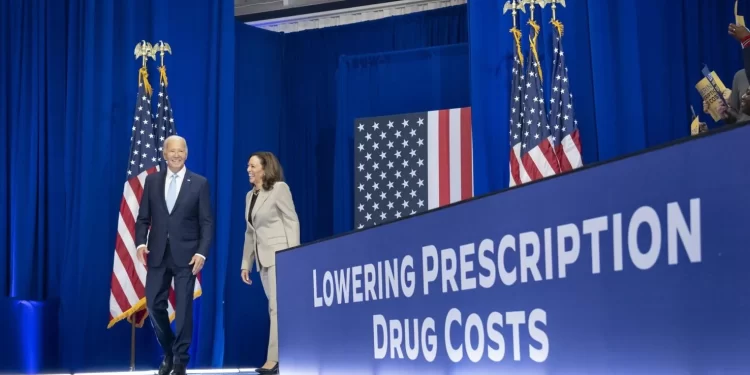By Christen Smith | The Center Square
(The Center Square) – The Biden administration said Thursday round one of its negotiations with pharmaceutical companies to lower list prices for 10 of Medicare’s most popular drugs will save taxpayers $6 billion next year.
The development comes as part of the $891 billion Inflation Reduction Act signed into law in 2022, which gives the federal government power to negotiate costs with drug manufacturers. List prices for medications that treat blood cancers, diabetes, heart disease, kidney failure and autoimmune disorders will decrease between 38% and 79% in 2026.
The administration says 1.5 million Medicare enrollees will see lower out-of-pocket costs that same year. In Pennsylvania, the change will impact more than 450,000 residents.
Drugs included in negotiations are Eliquis, Jardiance, Xarelto, Januvia, Farxiga, Entresto, Enbrel, Imbruvica, Stelara, and NovoLog/Fiasp. Fifteen more medications will be selected for discussion by Feb. 1.
Several Democratic congressional lawmakers from Pennsylvania joined U.S. Sen. Bob Casey, D-Pa., – chairman of the Senate subcommittee on Aging – in congratulating party colleagues for “taking on big pharma” and winning.
“For far too long, prescription drug costs have hung like a bag of rocks tied around the necks of millions of Americans, weighing them down every single day,” Casey said in a statement Thursday, noting his personal support for the provision.
“Today’s announcement is a huge relief for the people who rely on these often life-saving medications, and shows just how significant the savings will be as Medicare plans to engage in price negotiations on more and more drugs in the coming years,” he added.
The manufacturers behind the talks, however, say “negotiations” were nothing more than a “price-setting scheme” cloaked in political altruism ultimately meant for the campaign trail.
Steve Ubl, president and CEO of Pharmaceutical Research and Manufacturers of America, said there’s assurance that beneficiaries will see lower drug costs because insurance companies and pharmacy benefit managers “ultimately decide” what medications receive coverage and what they will cost.
“The administration is using the IRA’s price-setting scheme to drive political headlines, but patients will be disappointed when they find out what it means for them,” Ubl said Thursday.
The reality of the market means enrollees have fewer Medicare prescription benefit programs to choose from, with fewer covered medicines that will cost more than 3 million beneficiaries more money, he said.
Eliquis, in a statement published Thursday, agreed with Ubl, added that the imposed price “does not reflect the substantial clinical and economic value of this essential medicine, which is widely recognized for its effectiveness in reducing stroke-related events, hospitalizations, and extended rehabilitation needs.”
The negotiations come as part of a seven-year plan to improve health care affordability for seniors, Americans with disabilities and those living on low incomes. Last year, insulin cost sharing was limited to $35 monthly; coverage for adult vaccinations also grew. In 2024, the low-income subsidy for full coverage expanded to 150% of the federal poverty level – or $29,580 annually for a two-person household.
According to KFF, a San Francisco-based health care policy research group, 1.4 million unsubsidized Medicare Part D beneficiaries paid $2,000 or more out-of-pocket for medications in 2020. About 69% paid less than $3,000.
In 2023, 50.5 million people are enrolled in Medicare plans that include Part D drug benefits. The average monthly premium for coverage is $40, with one in five paying deductibles. Sixty percent of beneficiaries pay no deductibles at all.




